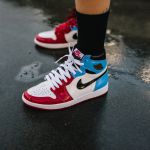
The store of the future is gender-neutral
The sneaker world might be the first field to introduce the genderless principle
October 13th, 2020
Last October, 9th adidas opened a completely gender-neutral concept store in London's Soho district. Unlike the huge flagship store on Oxford Street, this store is designed specifically for consumers between the ages of 18 and 24, said Chris Walsh, vice president of adidas UK. It's Walsh himself who explains how the brand has decided to present its products in a gender-neutral way, based on the sport the items were designed for or the collection to which they belong, regardless of gender, so that customers have the possibility to shop only according to their personal taste. The new concept store will also host the release of anticipated drops, usually released online, according to the brand "with the aim of bringing the sneaker culture experience into real life".
The latest adidas project represents a rather disruptive innovation, very different from the classic retail model that has remained basically unchanged in recent decades, and that can still be found, for example, in the first OFF-WHITE™ flagship store opened in Milan, where the separation between men's and women's collections resists, or the recent opening of the new Acne Studios store in Stockholm.
Today there's an evolution towards a genderless model in which the shelves of sneakers and other products are no longer divided by gender. The most obvious reason for this shift lies precisely in the change of mentality of a consumer audience, Gen Z, who no longer recognizes itself in a binary gender vision. According to a survey carried out by this year by Vice Media, about 41% of Gen Z members interviewed identify as 'neutral' on the gender spectrum. But not only. 56% of Gen Z consumers have long been shopping outside their gender, doing the so-called cross-shopping, ignoring labels or definitions such as 'for women' or 'for men' (data from the marketing agency Wunderman Thompson). Brands are therefore simply adapting to shopping habits that can no longer be ignored, but that, on the contrary, must be enhanced.
An anachronistic and almost inexplicable distinction based on gender persists especially in the sneakers world, both in terms of sizing and design. The inclusiveness of products could and should extend from retail to product design, putting an end to distinctions between women's and men's releases, because the same definitions have now become obsolete, trying to align the women's proposal to the qualitative level of the men's one. Eliminating any kind of difference based on gender, first of all by introducing a single size scale, would make the market not only inclusive but potentially even more successful because it is aimed at an even higher number of consumers.

































































